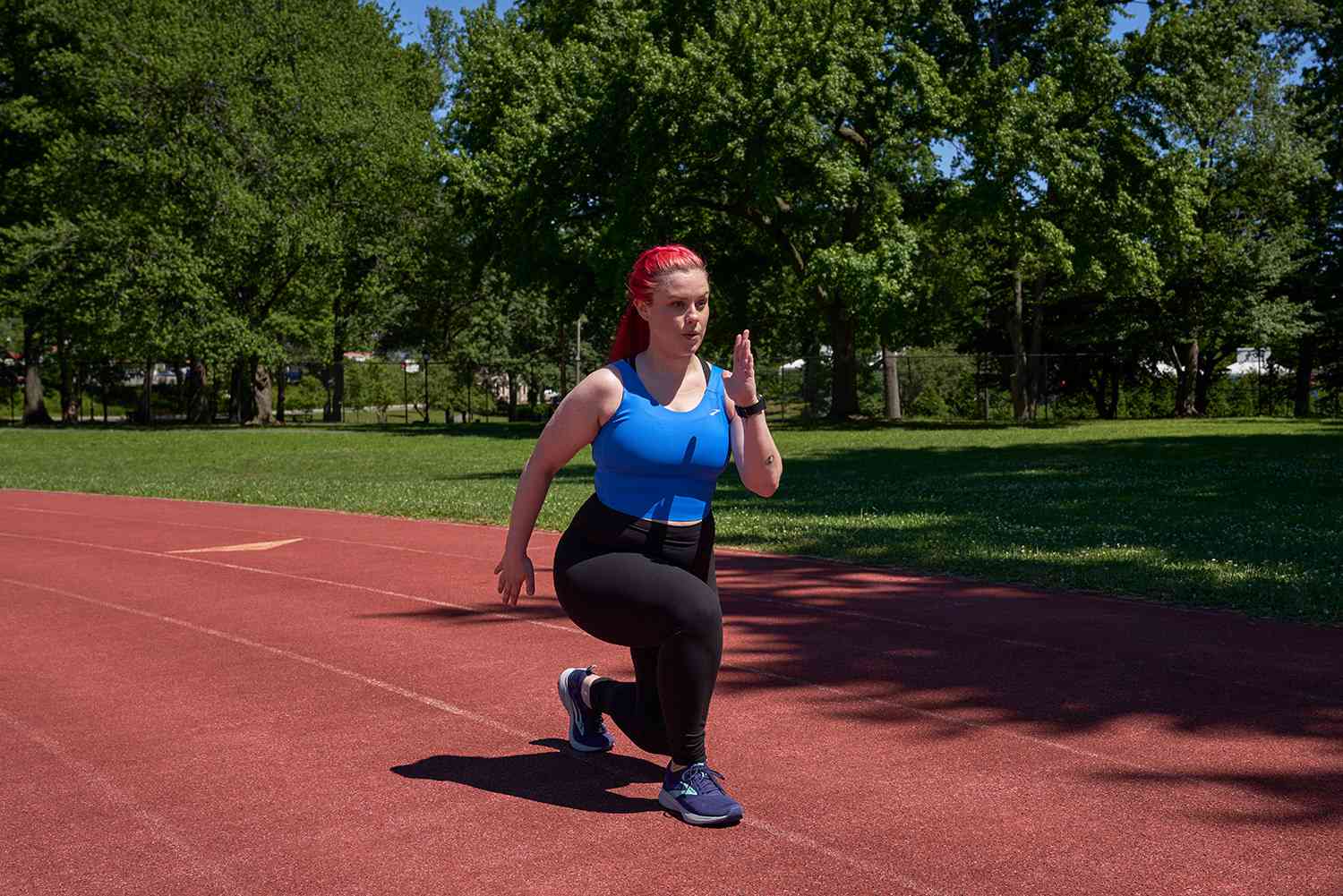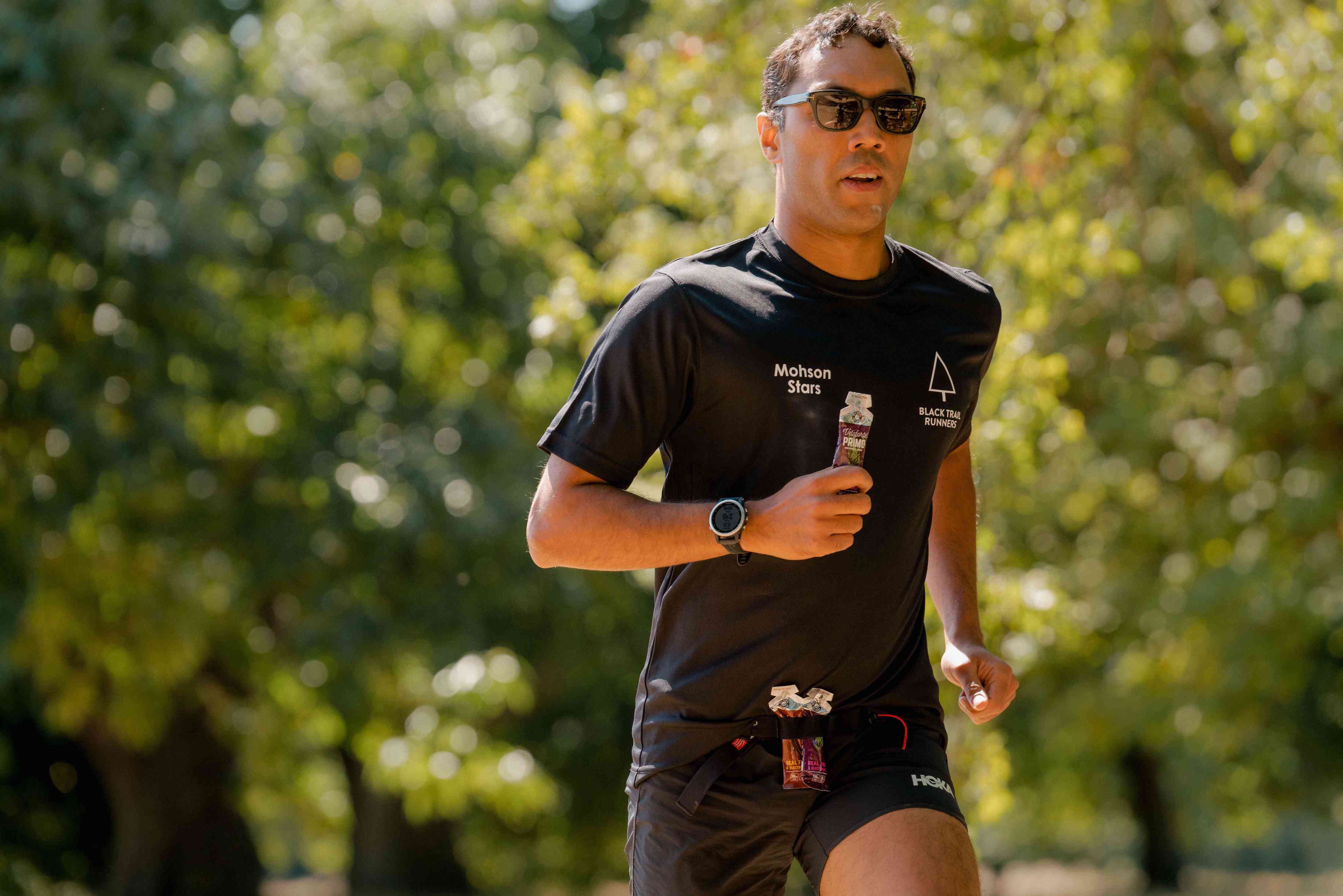

Featured
How To Run A 90 Minute Half Marathon
Modified: January 22, 2024
Learn how to train and pace yourself efficiently to complete a half marathon in just 90 minutes. Check out our featured guide to master the art of running faster and stronger
Introduction
Welcome to the world of half marathon running, where endurance and determination meet to test your physical and mental limits. Running a half marathon is an exciting challenge that requires careful preparation and training. Whether you”re a seasoned runner looking to improve your time or a beginner taking on your first race, this article will guide you on your journey to completing a 90-minute half marathon.
A half marathon, also known as a 13.1-mile race, is a popular distance for runners of all levels. It offers a rewarding balance between the endurance required for longer races and the speed and intensity of shorter distances. Running a half marathon in 90 minutes requires maintaining an average pace of around 6:52 per mile. While this may seem daunting, with proper training and preparation, you can cross the finish line with a sense of accomplishment and joy.
Throughout this article, we will delve into various aspects of training and preparation, including setting goals, creating a training plan, building endurance, incorporating speed workouts and hill training, strength training, proper nutrition and hydration, injury prevention, mental preparation, and race day strategies. By following these guidelines and implementing them into your training regimen, you will be well-equipped to achieve your goal of running a 90-minute half marathon.
It is important to note that each individual is unique, and results may vary. The key to success lies in understanding your own body and its capabilities, setting realistic goals, and gradually pushing yourself to improve. Remember, running a half marathon is not just about the destination; it”s about embracing the journey, pushing your limits, and discovering the strength within you.
So, lace up your running shoes, take a deep breath, and let”s embark on this incredible journey together. Whether you are aiming to beat a personal record or simply want to experience the joy of crossing the finish line, this article will provide you with the knowledge, tips, and inspiration you need to reach new heights in your running journey.
Setting Goals
Before embarking on your 90-minute half marathon journey, it is crucial to set clear and realistic goals. Setting goals will help you stay focused, motivated, and committed throughout your training. Here are some key points to consider when setting your goals:
- Time goal: Determine the specific time you want to achieve in your half marathon. Aiming for a 90-minute finish requires an average pace of approximately 6:52 per mile. Be sure to choose a goal that is challenging but attainable based on your current fitness level.
- Progressive milestones: Break down your main goal into smaller, incremental milestones. For example, aim to complete a 5k race in a certain time or run a specific distance at your target pace. These mini-goals will keep you motivated and allow you to assess your progress as you work towards your ultimate goal.
- Understand your limitations: It’s important to recognize your physical limitations and training capacity. Consider factors such as your current fitness level, any previous injuries or health conditions, and the amount of time you can dedicate to training. Setting realistic goals that take these factors into account will help prevent burnout or injury during your training.
- Define success: Success is not solely based on achieving your time goal. Define what success means to you personally. It could be completing your first half marathon, improving your overall fitness, or enjoying the journey along the way. Focusing on the process and embracing the challenges will make the experience more fulfilling and rewarding.
- Stay flexible: While it’s essential to set goals, be flexible and willing to adjust them if necessary. Life happens, and unexpected circumstances may arise. It’s okay to adapt your goals as long as you maintain a positive mindset and continue moving forward.
By setting clear and realistic goals, you will have a roadmap to guide your training and keep you motivated during the ups and downs of your half marathon journey. Remember, the journey is just as important as the destination, so make sure to enjoy the process and celebrate your progress along the way.
Creating a Training Plan
Creating a well-structured training plan is essential for preparing your body and mind for the challenges of a 90-minute half marathon. Here are some key steps to consider:
- Evaluate your current fitness level: Before diving into a training plan, assess your current fitness level. Determine how many days a week you can dedicate to running and the average mileage you can comfortably handle. This will serve as a starting point for designing your training schedule.
- Gradual progression: It’s important to gradually increase your mileage and intensity to avoid overtraining and injury. Start with a comfortable baseline and slowly build up your long runs and weekly mileage. Aim to increase your mileage by no more than 10% per week to give your body time to adapt.
- Include different types of runs: A well-rounded training plan should include a mix of easy runs, long runs, tempo runs, and speed workouts. Easy runs help build your aerobic base, while long runs increase your endurance. Tempo runs and speed workouts improve your speed and help you maintain your goal pace. Incorporating a variety of runs will enhance your overall performance.
- Rest and recovery: Adequate rest and recovery are just as important as the actual training. Schedule rest days to allow your body to repair and rejuvenate. Recovery tools such as foam rolling, stretching, and cross-training can also promote muscle recovery and prevent injuries. Listen to your body and never underestimate the power of rest.
- Consistency: Consistency is key when it comes to training for a half marathon. Aim to run at least three to four times a week and stick to your scheduled runs as much as possible. Consistency will help build endurance, improve your running efficiency, and prepare you mentally for the demands of race day.
- Adjust as needed: Be prepared to adjust your training plan as needed. Life events, weather conditions, or unexpected circumstances may require some modifications. It’s okay to adapt your plan, but try to maintain the overall structure and key elements of your training.
Remember, a training plan should be personalized to your specific goals and fitness level. Consider working with a running coach or utilizing online resources to create a plan that suits your needs. By following a well-designed training plan, you will build the endurance and strength necessary to conquer your 90-minute half marathon goal.
Building Endurance
Building endurance is a fundamental aspect of preparing for a 90-minute half marathon. It involves gradually increasing your ability to sustain effort over a prolonged period. Here are some effective strategies to build endurance:
- Long runs: Long runs are the cornerstone of endurance training. They help build your aerobic capacity and get your body accustomed to running for a longer duration. Start with a comfortable distance and gradually increase it each week. Aim to complete at least one long run per week, building up to a distance slightly longer than the half marathon race itself.
- Consistent mileage: Consistency is key when it comes to building endurance. Focus on increasing your weekly mileage gradually, allowing your body to adapt and get stronger over time. Aim for incremental increases in your total weekly mileage, but be mindful of the 10% rule to avoid overtraining.
- Cross-training: Incorporating cross-training activities such as cycling, swimming, or elliptical workouts can provide excellent cardiovascular benefits without the repetitive impact of running. It helps to build endurance while giving your running muscles a break from the pounding of the pavement.
- Interval training: Interval training involves alternating between high-intensity efforts and recovery periods. This type of training helps improve your aerobic capacity and endurance by challenging your body to perform at higher intensities. Incorporate interval workouts into your training plan, gradually increasing the duration and intensity of your intervals.
- Hill training: Running hills is an excellent way to build leg strength and improve endurance. Look for hilly routes or incorporate hill repeats into your training plan. Running uphill challenges your cardiovascular system and strengthens your leg muscles, both of which are crucial for maintaining a strong pace during a half marathon.
- Gradual progression: It’s important to stress the importance of gradual progression in building endurance. Pushing your body too hard too soon can lead to injuries or burnout. Respect your body’s limits and progress at a pace that allows you to stay consistent and injury-free.
Remember, building endurance takes time and consistency. Be patient with yourself and trust in the process. As you gradually increase your mileage, incorporate cross-training, and challenge yourself with interval and hill workouts, you will witness a significant improvement in your endurance, setting the stage for a successful 90-minute half marathon.
Speed Workouts
Speed workouts are an essential component of training for a 90-minute half marathon. Incorporating these workouts into your training plan will help improve your running efficiency, increase your speed, and allow you to maintain a faster pace throughout the race. Here are some key speed workouts to consider:
- Interval Training: Interval training involves alternating between intense bursts of effort and recovery periods. For example, you could run at a faster pace for 400 meters, followed by a recovery jog for 200 meters. Repeat this sequence for a predetermined number of intervals. These workouts help improve your speed and cardiovascular fitness.
- Tempo Runs: Tempo runs are sustained efforts at a comfortably hard pace, just below your maximum effort. These runs push your lactate threshold, improving your ability to sustain a fast pace over longer distances. Start with shorter tempo runs, gradually increasing the duration as your fitness improves.
- Fartlek Training: Fartlek, meaning “speed play” in Swedish, involves mixing up your pace during a run. Incorporate short bursts of faster running, such as sprinting to a specific landmark, then recover with an easy jog. Fartlek training builds speed, endurance, and mental toughness while making your runs more enjoyable and dynamic.
- Hill Repeats: Running uphill challenges your legs and cardiovascular system, making hill repeats an effective speed workout. Find a hill with a moderate incline and sprint up it at your maximum effort. Jog or walk back down for recovery, and repeat the sequence several times. Hill repeats build both strength and speed.
- Track Workouts: Running on a track allows for accurate distance measurements and precise interval training. Track workouts can include intervals of various distances, such as 800 meters, 400 meters, or 200 meters, at faster-than-race pace. This type of training improves your ability to run at a consistent, faster pace.
- Pyramid Workouts: Pyramid workouts involve gradually increasing and then decreasing the duration or distance of your intervals. For example, you could start with a short interval, then progressively increase the duration up to a peak, and then gradually decrease it back down. Pyramid workouts improve both speed and endurance.
When incorporating speed workouts into your training plan, it’s important to listen to your body and allow adequate recovery between these intense sessions. Start with one speed workout per week and gradually increase the frequency as your body adapts.
Remember, speed workouts are challenging but rewarding. They will help you develop the speed, endurance, and mental resilience necessary to achieve your goal of running a 90-minute half marathon. Embrace the opportunity to push your limits and become a faster, stronger runner.
Hill Training
Hill training is a crucial aspect of preparing for a 90-minute half marathon. Incorporating hill workouts into your training plan will help build strength, improve running form, and enhance your overall performance. Here are some key benefits and strategies for effective hill training:
- Strength and power: Running uphill engages different muscle groups, including your glutes, hamstrings, and calf muscles. This helps build lower body strength and power, which can translate to improved speed and endurance on flat terrain.
- Improved running economy: Running uphill requires more effort, leading to improvements in running economy. As you become more efficient at tackling hills, you will also become more efficient at maintaining a faster pace on flat surfaces.
- Increased mental toughness: Conquering hills requires mental resilience and determination. By incorporating hill training into your routine, you will develop mental toughness and the ability to push through challenging moments during the race.
- Proper technique: Hills encourage proper running form, promoting a more upright posture and shorter strides. Uphill running also encourages a midfoot or forefoot strike, leading to a more efficient and injury-resistant running technique.
- Types of hill workouts: There are several types of hill workouts that you can incorporate into your training. Hill repeats involve running up a hill at a challenging effort, then recovering by jogging or walking back down. This can be done for a specific number of repetitions or a set time. Hill sprints involve short, maximum effort bursts up steep hills. Long, gradual hill runs are another option, where you maintain a steady effort while running uphill for an extended distance.
- Incorporate hills into your route: If you live in an area with varying terrains, take advantage of natural hills and inclines during your regular runs. This will allow you to develop strength and endurance for uphill running. If you don’t have access to hills, you can also use a treadmill set on an incline or find a nearby parking garage with multiple levels.
- Progress gradually: Start with shorter, less steep hills and gradually increase the intensity and difficulty. Focus on maintaining good form and using your arms to drive your legs uphill. As you become more comfortable, gradually increase the number of repetitions or the distance of your hill workouts.
- Balance with flat and downhill running: While hill training is essential, it’s important to maintain a balance in your training. Incorporate flat runs and downhill running to ensure you’re working on different aspects of your race performance.
Remember to warm up properly before hill workouts and cool down with a gradual recovery jog afterward. Hill training should be integrated into your training plan once or twice a week, depending on your fitness level and goals. Consistency and gradual progression are key to reaping the benefits of hill training and improving your performance in the 90-minute half marathon.
Strength Training
Strength training is a valuable addition to your half marathon training regimen. Incorporating strength exercises into your routine will help improve your running economy, prevent injuries, and enhance your overall performance. Here are some key points to consider when it comes to strength training:
- Target key muscle groups: Focus on strengthening the muscles used in running, such as your core, glutes, hips, quads, and calves. These muscles play a crucial role in maintaining proper running form, stability, and power.
- Core exercises: A strong core provides stability and helps transfer power from your upper body to your lower body while running. Incorporate exercises like planks, Russian twists, and mountain climbers to strengthen your core muscles.
- Glute exercises: Strong glute muscles are essential for maintaining proper running posture and generating power. Include exercises like hip thrusts, lunges, and squats to target your glutes effectively.
- Hip exercises: Strengthening your hip muscles can help improve your hip stability, preventing injuries and optimizing your running mechanics. Exercises like clamshells, hip bridges, and lateral leg raises are great for targeting your hips.
- Quad and calf exercises: Strong quadriceps and calf muscles provide the necessary endurance and power for running. Incorporate exercises like lunges, step-ups, and calf raises to strengthen these muscles.
- Balance and stability exercises: Enhancing your balance and stability is crucial for injury prevention and optimal running performance. Include exercises like single-leg exercises, bosu ball exercises, and balance boards to challenge and improve your stability.
- Flexibility and mobility exercises: Don’t overlook the importance of flexibility and mobility. Incorporate stretching, foam rolling, and mobility exercises into your routine to enhance your range of motion and prevent muscle imbalances.
- Frequency and progression: Aim to incorporate strength training sessions into your routine two to three times per week. Start with lighter weights and focus on proper form before gradually increasing the intensity and weight. It’s important to listen to your body and give yourself enough rest and recovery between strength training sessions.
- Supplement with cross-training: Cross-training activities such as cycling, swimming, or yoga can complement your strength training routine. These activities provide cardiovascular benefits, improve flexibility, and allow for active recovery.
Remember, consistency is key when it comes to strength training. Find a routine that works for you and stick with it. Even a few minutes of targeted strength exercises a few times a week can make a significant difference in your running performance and overall fitness. By incorporating strength training into your half marathon training, you’ll become a stronger, more resilient runner.
Proper Nutrition and Hydration
Proper nutrition and hydration are integral components of your half marathon training plan. Fueling your body with the right nutrients and staying adequately hydrated will optimize your performance, enhance your recovery, and prevent fatigue and cramping. Here are some key guidelines to follow when it comes to nutrition and hydration:
- A well-balanced diet: Focus on consuming a well-rounded diet that includes a variety of fruits, vegetables, whole grains, lean proteins, and healthy fats. These nutrients will provide you with energy, support muscle recovery, and help maintain overall health.
- Pre-run fuel: Eat a balanced meal containing carbohydrates, protein, and healthy fats about 2-3 hours before your long runs or race day. This meal should be easy to digest and provide you with sustained energy. Experiment with different foods to find what works best for you.
- During-run fuel: During longer runs or the half marathon race itself, fueling becomes important to maintain energy levels. Aim to consume 30-60 grams of carbohydrates per hour, through sources such as energy gels, sports drinks, or easily digestible snacks like bananas or energy bars.
- Post-run recovery: After your training runs or race, prioritize recovery by consuming a combination of carbohydrates and protein within the first 30 minutes to replenish glycogen stores and assist with muscle repair. This could be a recovery drink, a protein shake, or a balanced meal that includes whole grains and lean protein.
- Hydration: Proper hydration is crucial for optimal performance. Aim to drink enough water throughout the day to maintain a light yellow urine color. During longer runs, carry a water bottle or plan your route around water stations. Consider using electrolyte-enhanced drinks or gels for longer runs to replenish sodium and other electrolytes lost through sweat.
- Listen to your body: Everyone’s nutritional needs differ, so it’s important to listen to your body’s hunger and hydration cues. Experiment with different foods and fluids during training to determine what works best for you. Pay attention to how your body responds and make adjustments as needed.
- Consult a professional: If you’re unsure about your nutritional needs or have specific dietary concerns, consider consulting with a registered dietitian or sports nutritionist. They can provide personalized guidance and help you develop a nutrition plan tailored to your goals and dietary preferences.
Remember, proper nutrition and hydration are key to optimizing your performance and maximizing your training efforts. Prioritize a balanced diet, fuel yourself before, during, and after runs, and stay adequately hydrated. By nourishing your body properly, you’ll have the energy and stamina to tackle your 90-minute half marathon goal.
Injury Prevention
Injury prevention is an essential aspect of your half marathon training. Taking proactive measures to prevent injuries will ensure that you stay healthy and on track to achieve your 90-minute half marathon goal. Here are some key strategies to help you prevent injuries:
- Gradual progression: One of the most important factors in injury prevention is gradually increasing the intensity, duration, and mileage of your runs. Avoid sudden spikes in training volume, as this can overload your muscles and lead to injuries. Stick to the 10% rule, increasing your mileage by no more than 10% per week.
- Proper warm-up and cool-down: Always start your runs with a dynamic warm-up to activate your muscles and increase blood flow. Incorporate dynamic stretches, lunges, and leg swings. After your run, spend time on a cooldown routine, which includes static stretching and foam rolling to aid in muscle recovery and prevent tightness.
- Strength and cross-training: Incorporate strength training exercises to build overall body strength and balance. Strengthening your core, glutes, and legs can help prevent imbalances and reduce the risk of injury. Cross-training activities such as swimming, cycling, or yoga can also help improve your overall fitness and provide active recovery.
- Listen to your body: Pay attention to any warning signs or discomfort during your runs. If you experience pain, excessive fatigue, or any unusual symptoms, it’s essential to listen to your body and take the necessary rest or seek advice from a healthcare professional if needed.
- Proper running form: Maintain a proper running form to reduce the risk of injury. Focus on landing softly, with a midfoot strike, and keeping your torso upright. Avoid overstriding, which can put excessive stress on your joints. Regularly check in with your form and make adjustments as needed.
- Proper footwear: Invest in a good pair of running shoes that provide adequate support and cushioning for your feet. Visit a specialty running store to get fitted properly, considering factors such as pronation, arch type, and shoe type. Replace your shoes regularly to ensure they are providing optimal support.
- Rest and recovery: Allow yourself enough rest and recovery days between runs. Recovery is when your body repairs and strengthens itself. Incorporate rest days into your training plan and prioritize sleep to promote optimal recovery.
- Address imbalances: If you have any imbalances or predispositions to certain injuries, work with a physical therapist or sports medicine professional to address these issues. They can provide specific exercises and guidance to help correct imbalances and prevent future injuries.
Remember, prevention is key when it comes to injuries. Prioritize proper warm-up and cooldown routines, incorporate strength and cross-training, and listen to your body. By implementing these strategies, you’ll minimize your risk of injuries and set yourself up for a successful and injury-free half marathon journey.
Mental Preparation
Mental preparation is just as important as physical training when it comes to running a 90-minute half marathon. Cultivating a strong mental game will help you stay focused, motivated, and resilient throughout your training and on race day. Here are some key strategies to help you mentally prepare for the half marathon:
- Set positive and realistic expectations: It’s important to have positive and realistic expectations for your race. Set achievable goals that reflect your current fitness level and training progress. Visualize yourself crossing the finish line strong and confident.
- Develop a mantra or positive affirmations: Create a personal mantra or positive affirmations that resonate with you. Repeat these phrases during long runs or when the going gets tough. They can serve as a powerful tool to keep you motivated and focused.
- Practice visualization: Visualize yourself successfully completing the half marathon. Imagine yourself running strong, feeling confident, and crossing the finish line with a sense of accomplishment. Visualization helps build mental resilience and primes your mind for success.
- Break the race down: Rather than focusing on the entire distance, break the race down into smaller milestones or segments. Set mini-goals for each section of the race, such as reaching a certain landmark or maintaining a specific pace. This approach makes the race feel more manageable and keeps you mentally engaged.
- Practice positive self-talk: Be mindful of your self-talk during training and on race day. Replace negative thoughts with positive and encouraging statements. Cheer yourself on with words of affirmation and remind yourself of your training and preparation.
- Embrace positive imagery and music: Surround yourself with positive imagery and uplifting music that motivates you. Create a playlist of energizing and inspiring songs to boost your mood and keep you mentally fired up during your runs and on race day.
- Practice mindfulness and deep breathing: Incorporate mindfulness and deep breathing exercises into your training routine. This helps calm your mind, reduce stress, and increase your focus. Experiment with different techniques and find what works best for you.
- Seek support and accountability: Engage with a supportive network of fellow runners or training partners who understand your goals and challenges. Share your progress, seek advice, and draw upon their encouragement and motivation when needed. Having a support system can make the journey more enjoyable and inspire you to push through difficult times.
- Celebrate small victories: Acknowledge and celebrate the smaller victories during your training, such as completing a challenging workout or hitting a new personal record. Recognizing and celebrating these milestones keeps you engaged, motivated, and reinforces your confidence.
Remember, training your mind is just as important as training your body. By incorporating mental preparation strategies into your training routine, you’ll strengthen your resilience, focus, and motivation. These mental tools will help carry you through the tough moments and empower you to achieve your 90-minute half marathon goal.
Race Day Strategies
Race day is the culmination of all your hard work and preparation. It’s essential to have a solid plan in place to ensure a successful and enjoyable 90-minute half marathon. Here are some race day strategies to help you perform your best:
- Arrive early: Plan to arrive at the race venue early to avoid any last-minute stress and allow time for warm-up routines, final preparations, and familiarizing yourself with the course layout.
- Stick to your routine: Stick to the routine that has worked well for you during training. This includes your pre-race meals, stretching, warm-up routines, and hydration strategy. It’s important to minimize any changes that could negatively impact your race performance.
- Pace yourself: Start the race at a steady pace that allows you to maintain your goal pace throughout the entire distance. Avoid starting too fast, as it can lead to burnout and exhaustion later on. Stay focused on running your own race and resist the temptation to go out with the pack.
- Use mile markers: Pay attention to the mile markers along the course to help gauge your pace and track your progress. Breaking the race down into smaller segments can make it feel more manageable and help you maintain a consistent pace.
- Stay hydrated and fueled: Make use of water stations along the course to stay hydrated. If you’ve practiced taking in fuel during long runs, continue to do so during the race. Stick to the nutrition and hydration plan that has worked well for you during training to avoid any stomach discomfort or unexpected issues.
- Focus on form and breathing: Throughout the race, periodically check in with your running form and breathing. Maintain good posture, relax your upper body, and breathe deeply. This will help you stay relaxed and efficient, especially during challenging moments.
- Stay mentally strong: Use mental strategies such as positive self-talk, visualization, and repeating your mantra to stay mentally strong and motivated. Embrace the excitement of race day and draw upon the strength and determination you’ve built during your training.
- Embrace the crowd support: Allow yourself to feed off the positive energy and encouragement from spectators along the course. Their cheers and support can provide a powerful boost when you need it most.
- Push through challenging moments: There may be moments during the race when you feel tired or doubt yourself. Remind yourself of your training, the hard work you’ve put in, and your goals. Dig deep and push through those difficult moments, knowing that the finish line is within reach.
- Finish strong: As you near the finish line, find it in you to dig deep and give that final push. Maintain your form and accelerate if possible to cross the finish line with a sense of accomplishment and pride. Celebrate your achievement as you collect your medal and reflect on the hard work and dedication that got you to this point.
Remember, race day is the culmination of your training journey. Trust in your training, have a solid plan in place, and embrace the excitement and challenge of the race. Stay focused, stay positive, and enjoy the experience as you cross the finish line of your 90-minute half marathon.
Conclusion
Congratulations on embarking on the journey to run a 90-minute half marathon! This comprehensive guide has provided you with the knowledge, strategies, and tips to help you achieve your goal. From setting realistic goals and creating a training plan to building endurance, incorporating speed workouts, and focusing on mental preparation, you are equipped with the tools to succeed.
Remember that success in running a 90-minute half marathon is not just about the destination; it’s about embracing the journey. Every step you take, every training session you complete, and every obstacle you overcome contributes to your growth as a runner and an individual. Stay consistent, be patient with yourself, and trust the process.
While training for a half marathon is a physical endeavor, it is equally important to take care of your mental and nutritional well-being. Focus on positive self-talk, visualize success, fuel your body with proper nutrition, and prioritize hydration. By taking care of yourself holistically, you’ll optimize your performance and enhance your overall experience.
As race day approaches, implement your race day strategies and trust in the preparation you’ve done. Stay present, enjoy the atmosphere, and give it your all. Cross the finish line with pride, knowing that you’ve put in the effort and dedication to achieve your goal.
Remember, running a 90-minute half marathon is an accomplishment to be proud of, regardless of the final time. Embrace the joy of running, challenge yourself, and savor the experience, for it is the journey itself that makes the destination all the more rewarding.
Now it’s time to lace up your running shoes, put your training plan into action, and start working towards your 90-minute half marathon goal. Believe in yourself, stay dedicated, and embrace the transformation that this journey will bring. Best of luck in your training and on your race day adventure!









